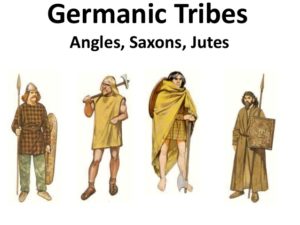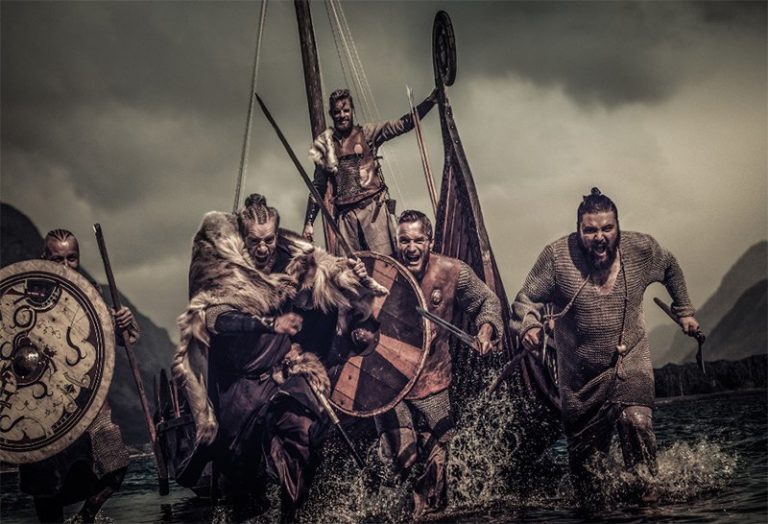Wales - Angles, Saxons, Normans, and Vikings
Author: Robert W. Penry @ 2021

The previous chapter covered the time of the Welsh Princes. The Romans had left and the people who were left were Celts and Romano/Celts. The Celtic tribes ruled all of the British Isles. But things were changing. During the 5th Century, Germanic tribes began an invasion of the area now known as England. There were three tribes, the Angles, the Saxons, and the Jutes who came from the area of current Northern Germany and Denmark. They invaded during the Roman occupation and continued after the Romans had left. The Anglian peninsula connects Denmark and a German portion of the Peninsula to continental Germany. The Angles are said to have come from the Germanic area of the peninsula, the Jutes from what is now Denmark, and the Saxons, immediately to the south. Also included in the Anglo-Saxon people are the Frisians and the Franks also from the Northern Germanic coastal region.
In England, The Saxons inhabited the South East, the Jutes, a small portion in the extreme south and southeast, and the Angles to the North of the Saxons. The Anglo-Saxons then split into tribal areas, Northumbria, Mercia, East Anglia, Essex, Wessex, Sussex, and Kent.
The Anglo-Saxons invaded Wales, but not successfully. They were able to conduct raids, but the warlike Celts of Wales were able to resist. Mercia was the area immediately to the east of Wales. During the years 757 until 796, the Anglo-Saxon King of Mercia, Offa, built an earthwork which is called Offa’s Dyke. For years workers dug a deep ditch along what is now the eastern border of Wales, effectively creating today’s boundary. The dirt from the ditch was piled up creating a massive earthwork 65 feet wide and 8 feet high. The length is 177 miles long stretching from Liverpool Bay to the Severn Estuary. Recent findings indicate that Offa may have simply continued work started by the Romans in the 5th century. In any event, this earthwork became the boundary.
Offa’s Dyke was not just a visible boundary, it was also a boundary of the mind. The Welsh said they lived inside the “wall” and the English outside. This affected their very lifestyles and attitudes. In May 2020, Prof. Howard M.R. Williams disagreed with the idea of Offa’s Dyke separating England and Wales and that the people and attitudes of both sides were no different. I disagree with his assessment. It may be that the existence of the dyke did not impede commerce or even war at first, but eventually, it created today’s border.
In any event, the existence of the Anglo-Saxons east of Offa’s dyke had little impact on the Welsh. The people on both sides of the dyke had different languages and customs. The economy was a barter economy. Coin was not used to trade between the two cultures. When the Welsh interacted with the Anglo-Saxons, it usually involved warfare. Hundreds of battles were fought, from the 5th Century all the way to the Norman invasion of 1066. These battles took place all over the Island, not just in Wales. Battles ranged from Northumbria to the English Channel. The Celts were extremely warlike. The history of Celts fighting invaders goes back to the arrival of the Romans.
There is no evidence of the early Anglo Saxons affecting the way the Welsh lived. The Welsh did not acquire architectural ideas, clothing, or religion from the Anglo Saxons to any extent. It is possible that they may have acquired some agricultural ideas.
After the Norman invasion, the English way of life began to affect how the Welsh lived, especially the gentry. The building of manor homes and castles, the acquisition and control of estates, the new clothing, jewelry, foods from the European Continent, the Near East, and Africa made changes that still exist.The gradual replacement of Welsh with the English language and the introduction of English law affected daily life in Wales.The life of the peasant farmers remained largely unchanged for a very long time. Real change commenced with the industrial revolution.
Wales had readily accepted the Romans. They intermarried and took advantage of Roman ideas and culture. They resisted the Anglo Saxons and maintained their Celtic culture. But now they faced a much greater threat.
For the Anglophobe, the Normans brought cultural disruption, slavery, and poverty.
For the Anglophile, the Normans brought European cuisine, religious diversity, and law and order.
Both are correct. The events of 1066 changed Wales forever. Wales would never go back to the way of life that existed before.
The Normans had conquered the Anglo Saxons. The Normans were the new English.
These English looked to the West. They saw the riches of Wales, the copper, gold, iron, the agricultural wealth. They also were aware of the military strength of the Welsh princes. Invasion became inevitable. Alliances were made, that were quickly broken by either side. The Welsh continued to fight among themselves, making them vulnerable. The English had already shown their military prowess by the defeat of the Saxons. Wales was next!
It is the 13th and 14th Centuries. Edward I – Longshanks, the Hammer of the Scots is on the throne. He has fought a civil war called the Baron’s War and has departed for the Crusades.During the Baron’s War, Llywelyn ap Gruffdd rebelled and refused to do homage to Edward. Llywelyn wanted independence, but Instead of a punishing invasion of Wales, Edward views it as a war of conquest. Edward prevails and in 1284, the Statute of Rhuddlan incorporated the Principality of Wales into England and set up a system of counties. English law was introduced for criminal cases, but the old Welsh Law from the days of Hywel Dda remained for civil matters.
Castle building began in earnest to provide fortresses for English troops in order to control the rebellious Welsh. These castles included Beaumaris, Caernarfon, Conwy, and Harlech.
Starting with Edward I, the following kings ruled up to Henry Tudor
Richard III (Defeated at Bosworth)
(Beginning of the Tudor line)
